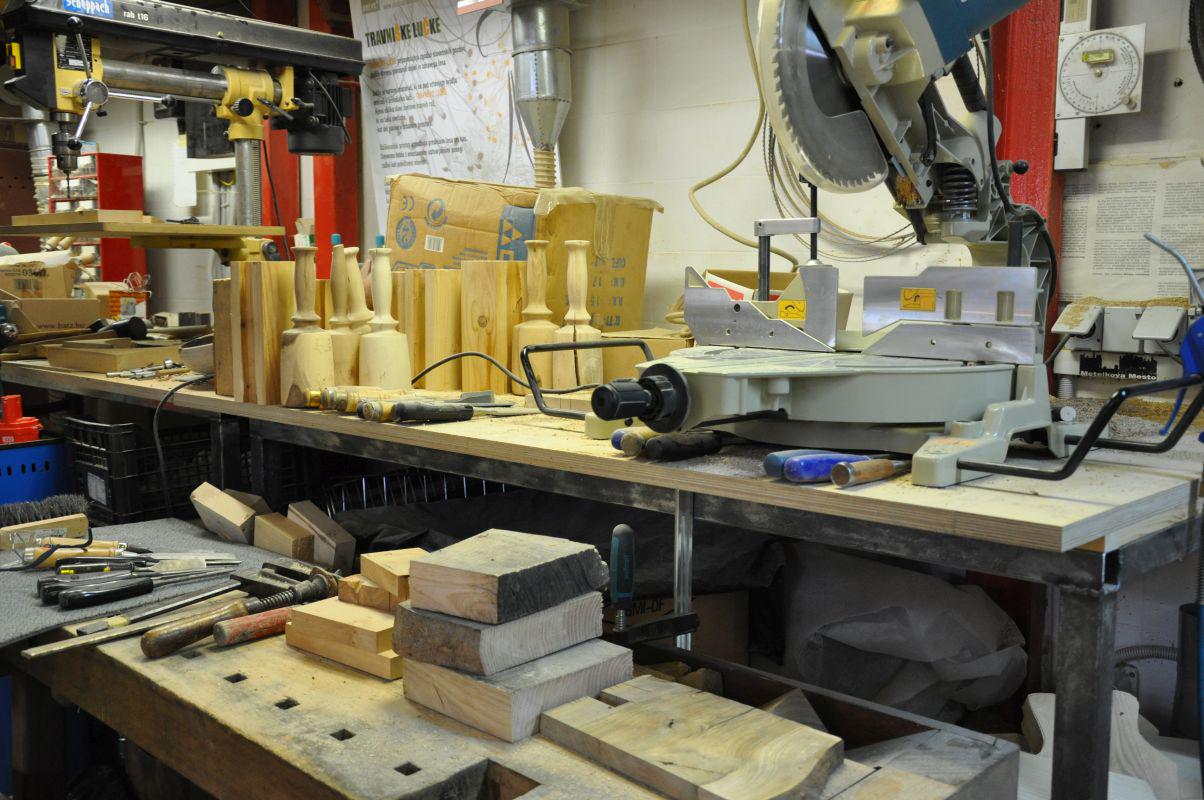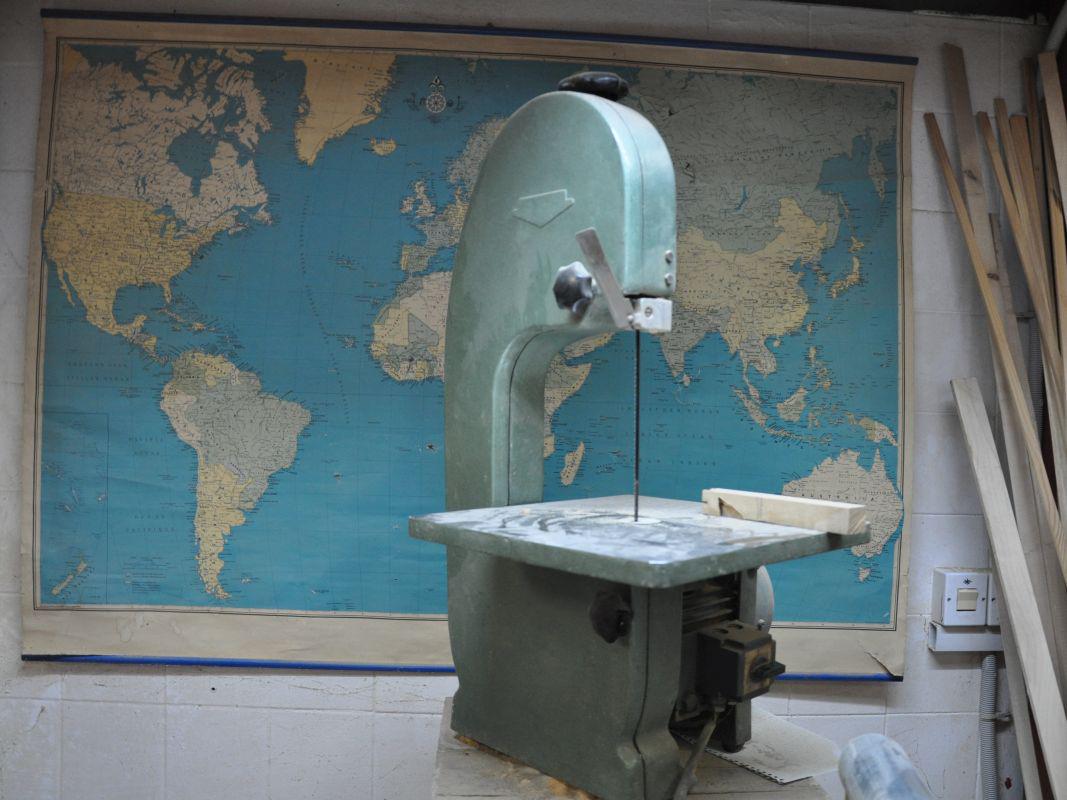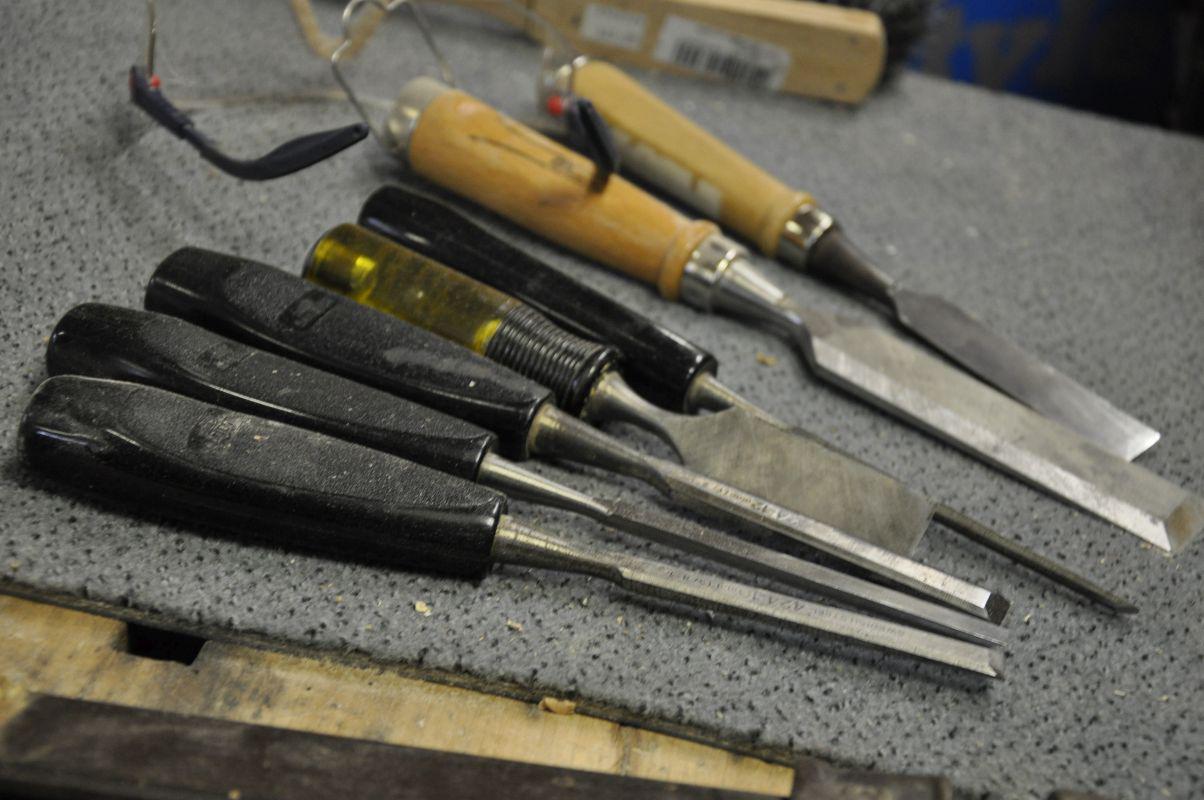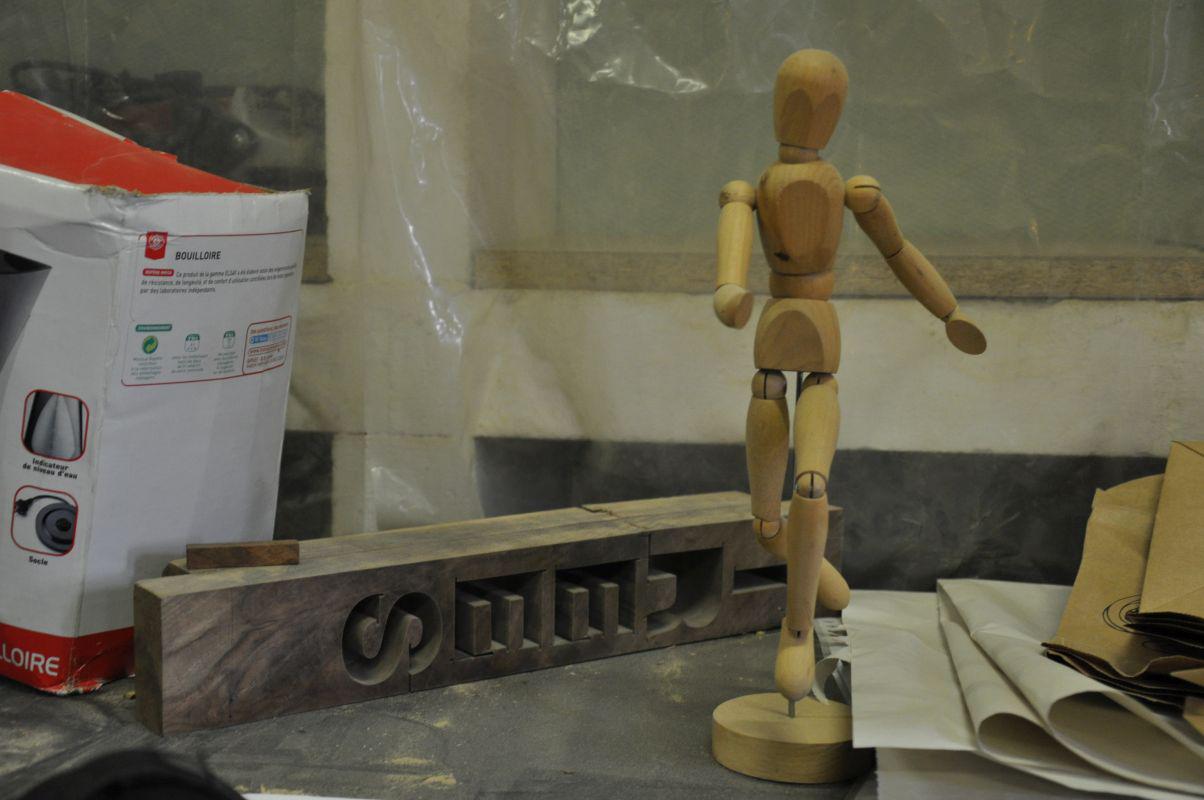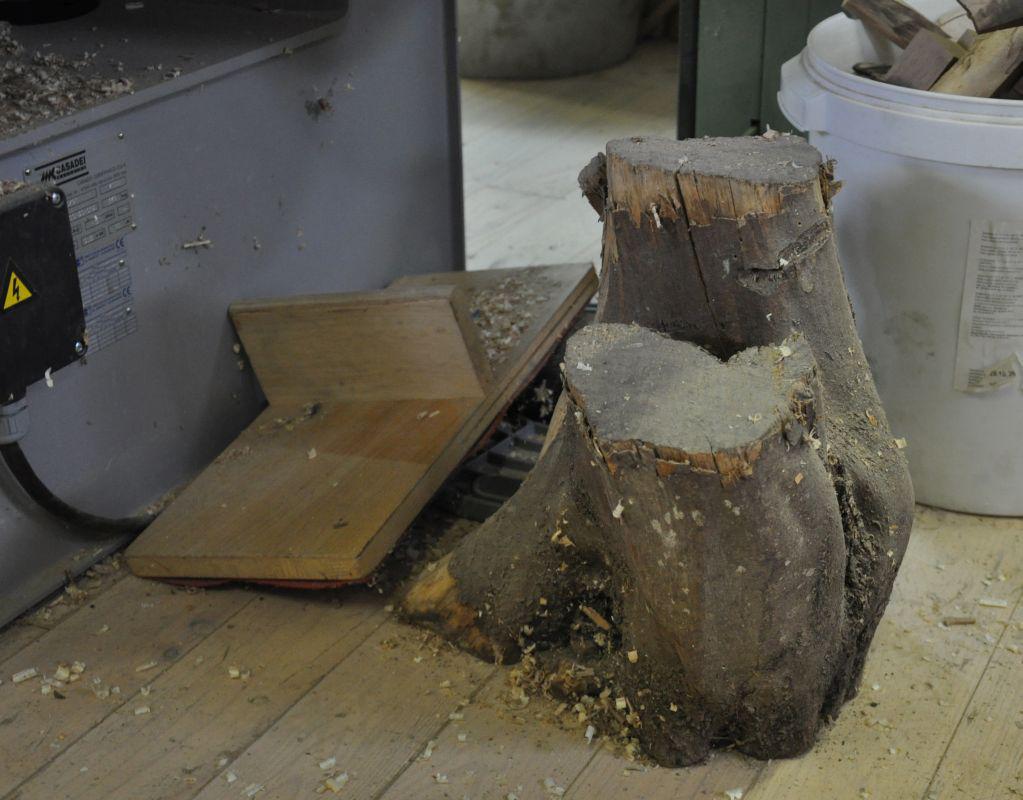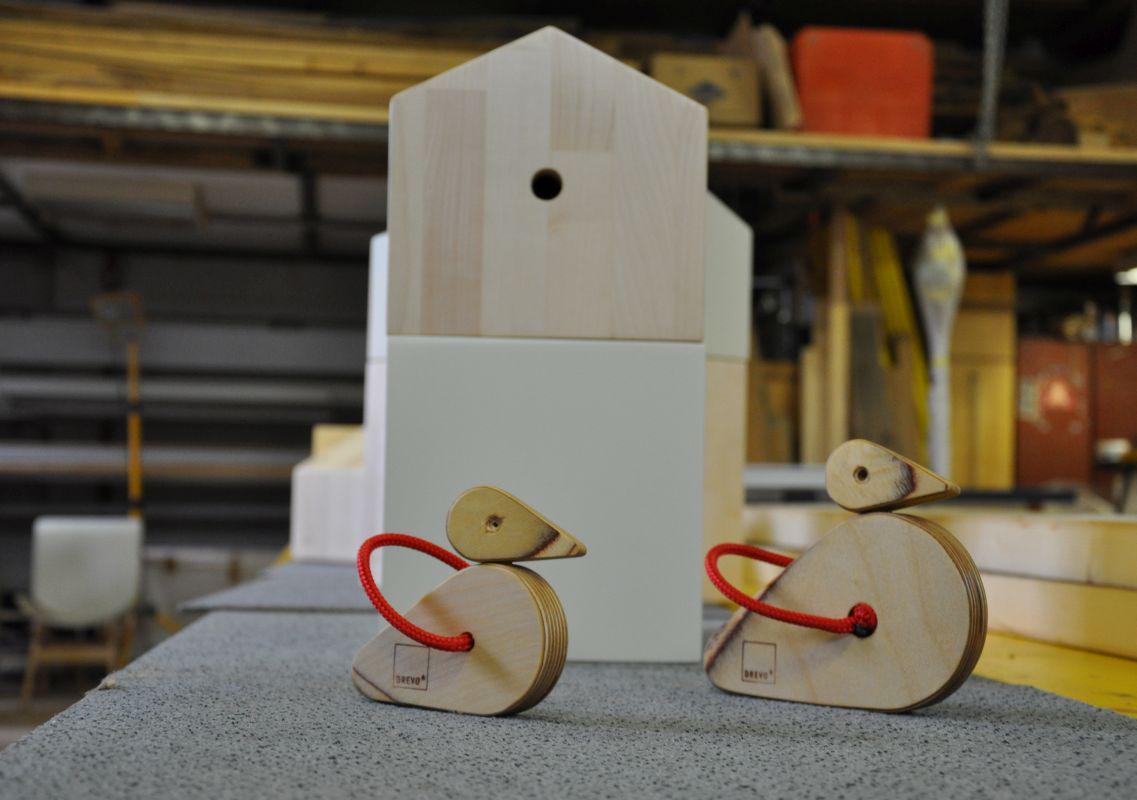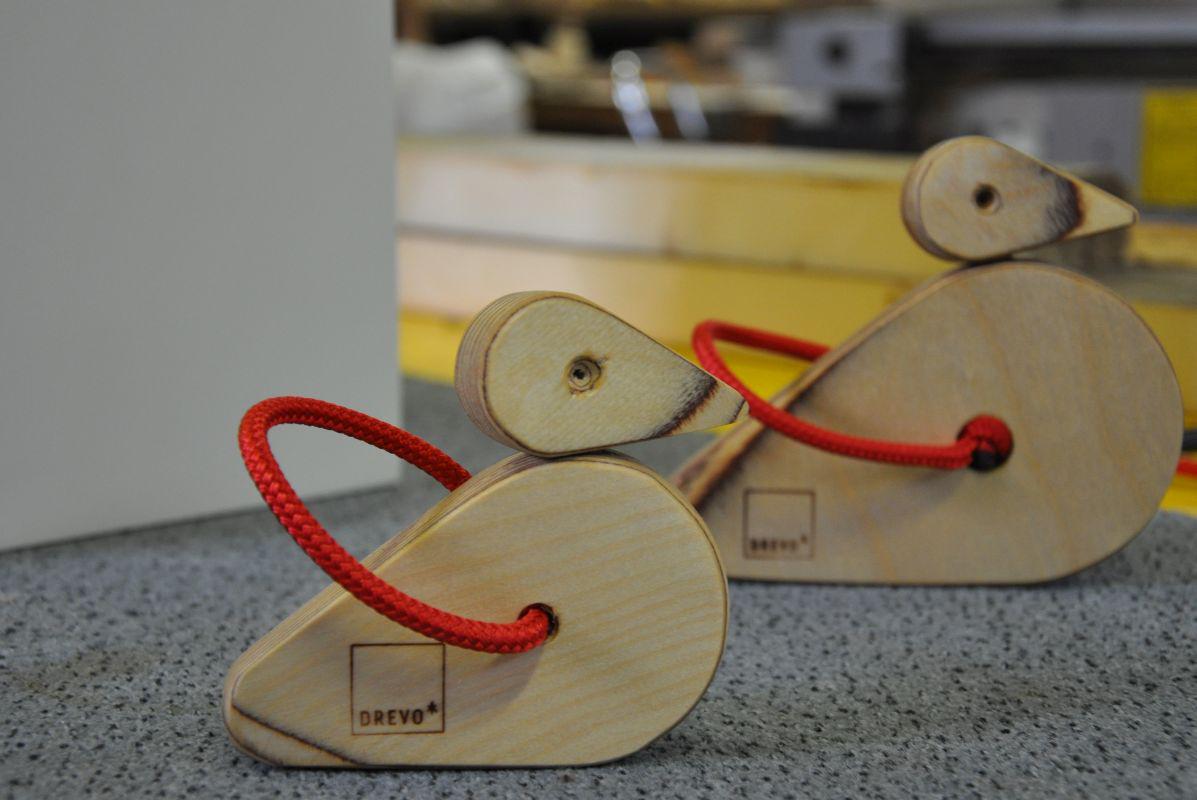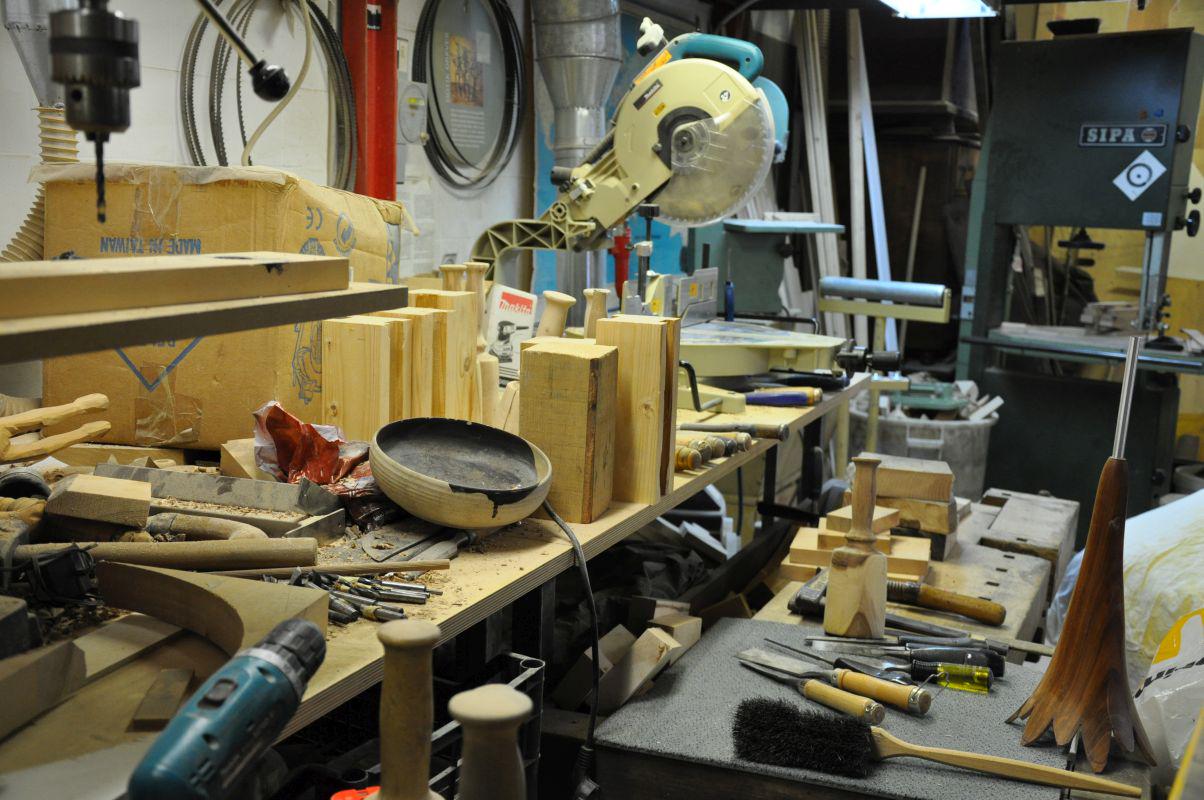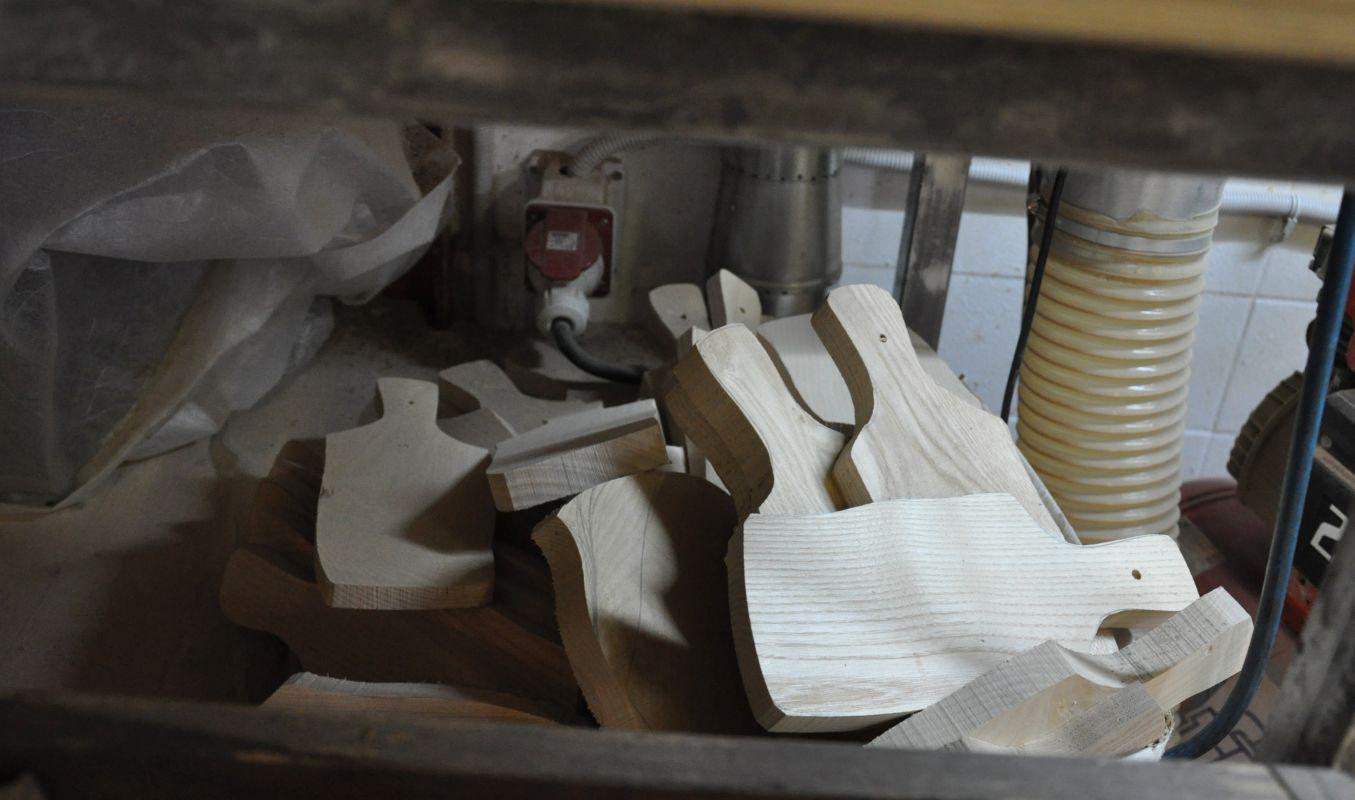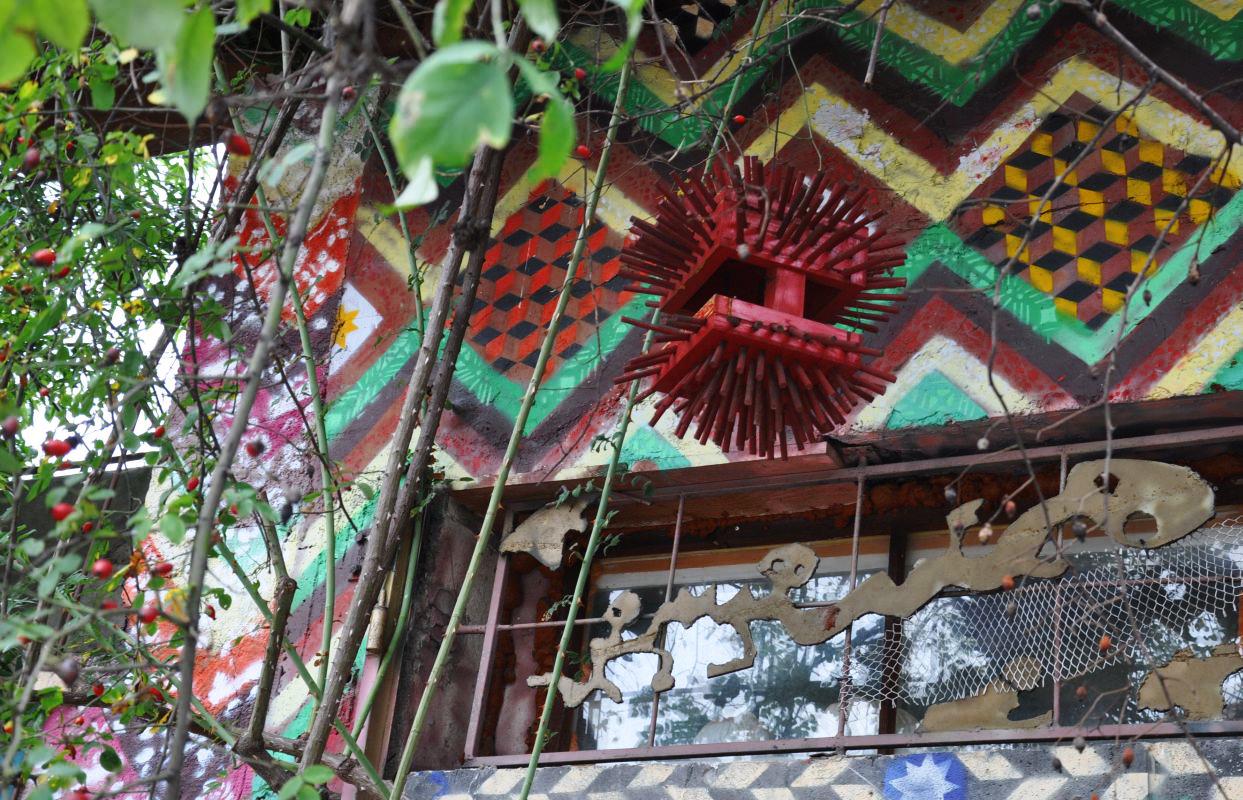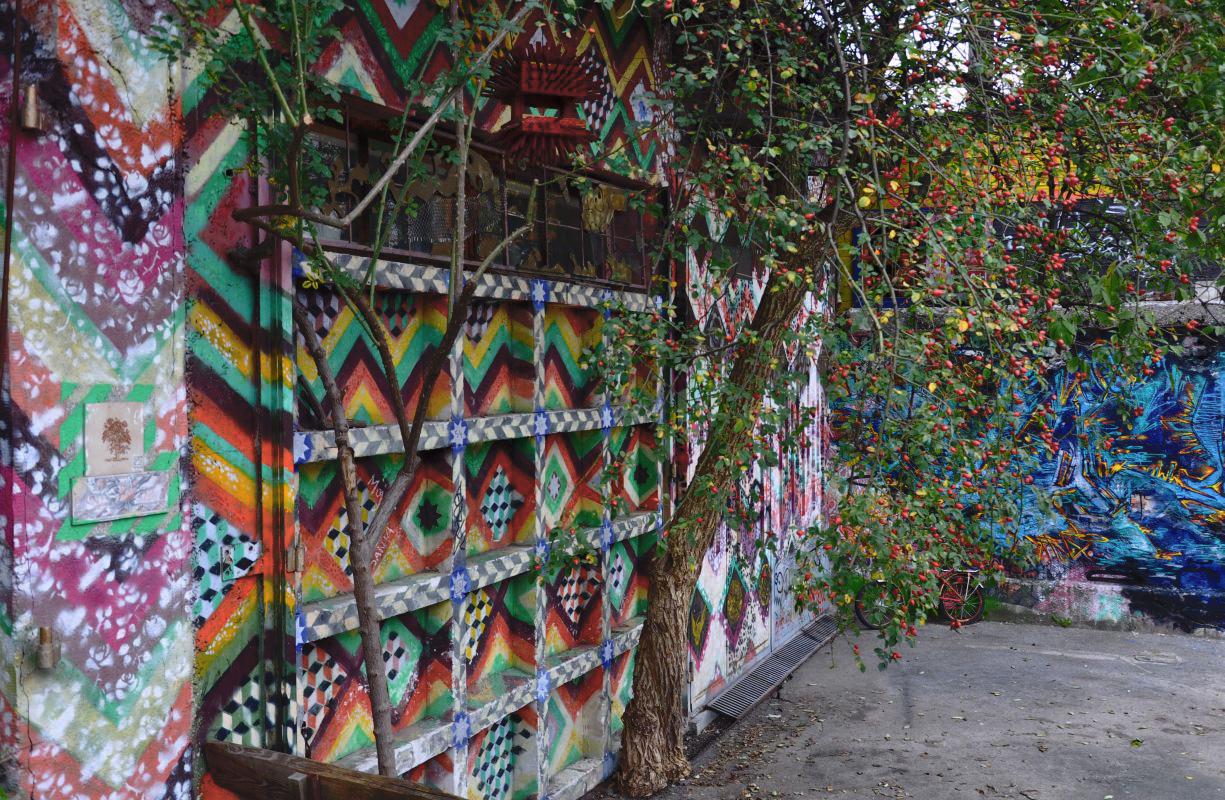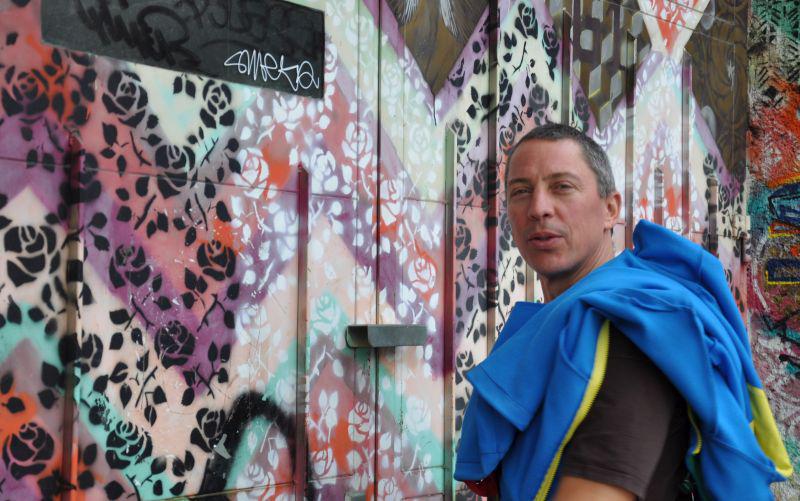

It's obvious that city folk and city officials are not interested in reviving old centers with Slovenian products.


The weight of durability got lost with consumerism, which offers what you need, when in fact you don't really need anything.

My grandpa was great. He was a forester, a hunter, an electrician, a plumber, a carpenter, in one word a jack of all trades. We made a tree house once and that was great. I then asked myself how I could make a house under the trees, which would be magical, but also practical.




The difference between making a rocking chair and a normal chair is the following: when you make a chair, it's like finishing high school, or a bit of college. With the rocking chair it's like getting a PhD.

On a large workshop table at Metelkova in Ljubljana, where he's been working for more than 20 years, right in the middle of all the wood boards, tools and dusty logs waiting to get their final look, Dejan places a Babuška. Not one of those Russian matryoshka dolls of five different sizes, designed such that each fits inside the next and with which we used to play with as children. This is a reinterpretation. A set of five wooden houses, intended for storing toys or hiding, depending on the child's imagination. Thanks to these little houses Dejan and Nadja Pfeifer have been invited to the Tendence Frankfurt Fair 2014.
"Feel good! Use Wood!" is the main motto of this designer-architect duo, which works under the Studio Drevo brand. And quality, functionality, and durability, "which seem to have gotten lost with consumerism", do have their price. Dejan would never make a chipboard product. Even more, he has always refused such orders. "Cheap products which quickly wear out, are just a reflection of how superficial today's society is" says Dejan.
One of your products was the UFO bird house (from the Directions in Green collection). In the course of its making you also consulted with ornithologists.
That's true. I did make more types of bird houses, but the final version was made from joint boards in the form of a cube. It has an opening, a cut, and is accessible from all sides. 180 wooden sticks in different lengths give the outside look of circle. Chestnuts, which are green, were the association for the colour. This is also where I first used colour in my work. Before I always avoided using synthetic coverings, which means colour, while working on solid wood. I always wished to preserve the natural image of wood.
And what was the birds' reaction?
They acted like children at the Gardaland amusement park (laughter). Something like: 'Now you show me what you can do!' For one year I placed the houses in front of the Ethnographic Museum in Ljubljana and it was total rock'n'roll.
Your 'invitation' to take part at the Tendence Frankfurt Fair were the Babuška houses for storing things. That's not bad, right?
Yes, that is quite good, and we have had positive reactions, especially from the media. The Babuška houses are intended for storing toys, books, blankets, clothes. The idea was also to be able to store them one inside the other, so if you have an extra house you just put the smaller one inside the bigger one. Children can also play with them, make different forms and even create a silhouette of a town. And if they turn them around they can also hide in them. Otherwise they're made out of solid wood and medium-density fibreboards.
You make everything entirely by yourself?
Yes. If I'm making bigger things then I do ask for help, but otherwise I work alone.
Among your products we can also find a truly interesting wooden sink called aQa. How did you come up with the idea and how do you treat the wooden sink for it be durable?
That was my first sink, and I made it for a wine cellar. As I already had all the measurements and drawings, all I had to do was use my knowledge to make the sink functional i.e. not crack. That is why I picked acacia wood. Choosing the method of gluing and the type of glue was also very important. The sink is maintained with oil. Once every three of four months it's coated with oil, and that's it. However if you would use it in a bathroom – and I've also already made a double sink with two basins – you would have to coat it even more due to more frequent use.
One can notice from your work that you strive towards the perfection of Japanese craftsmen, but are also close to the Scandinavian way of design.
I like the Japanese way of life, which is very much connected to nature, and the Scandinavian way of life, where children are taught about nature as early as in kindergarten. They take them in the nature to touch trees, smell leaves and scream, which doesn't really happen here. And the Japanese are also strongly connected to nature. What excited me about them is how perfectionist they are when dealing with carpentry. That's something I also strive to become. That means precision in work, which gives the product an aesthetic look and functionality which lasts. I'm interested in products with unlimited shelf life.
It is quite known that Austria has a well-established vertical supply system in the wood industry, from forest tress to final products. How much understanding does our country have for this industry?
That's probably a cynical question (laughter) for of course it doesn't. After this year's ice storm, which was a natural catastrophe, we can all see the results of what was done and what could have been done. I went to the chamber of commerce, where the wood industry cluster is - an organization made up of more companies which make their living by selling wood, mostly abroad. I wanted to present them an initiative, but they weren't interested.
What would you do with the leftover wood?
The ideas for what you could do with the wood are countless
For example?
One example is a product, which I did make, a chair called Diamant (Diamond). The chair is made out of a log, regarded as waste and normally used as heating wood. However with it you can make furniture for outdoor gardens, parks, city centres, kindergartens.
And the answer was negative?
There was no answer.
What will happen to all that wood now?
More than 50 percent of all that wood will go, or has already gone, to Austria or Germany, to be processed. Around 50 percent of that is high quality wood. Large quantities of wood are sent to Austria and Germany on a daily basis and made into processed materials, like for example joint boards – made out of a big number of glued layers of wood. And then we buy back the products for a very expensive price. I read a commentary in the Dnevnik daily that said it's like Saudi Arabia exporting its oil, only to import it again at a higher price.
Tell us, which furniture is worth investing in?
I would first ask myself what I use most often. Let’s take the car for an example. The average driver spends an average 30 minutes in the car. Now consider how much you've invested in your car, taking into account the maintenance costs and everything else, and how much time you spend in it compared to your bed, where you spend an average of eight hours. The dining table is also important. It's a point for socializing and talk, things which are slowly dying out.
Photo: Nejc Saje, Branko Čeak in arhiv Studia Drevo
It's obvious that city folk and city officials are not interested in reviving old centers with Slovenian products.
The weight of durability got lost with consumerism, which offers what you need, when in fact you don't really need anything.
My grandpa was great. He was a forester, a hunter, an electrician, a plumber, a carpenter, in one word a jack of all trades. We made a tree house once and that was great. I then asked myself how I could make a house under the trees, which would be magical, but also practical.
The difference between making a rocking chair and a normal chair is the following: when you make a chair, it's like finishing high school, or a bit of college. With the rocking chair it's like getting a PhD.






















































